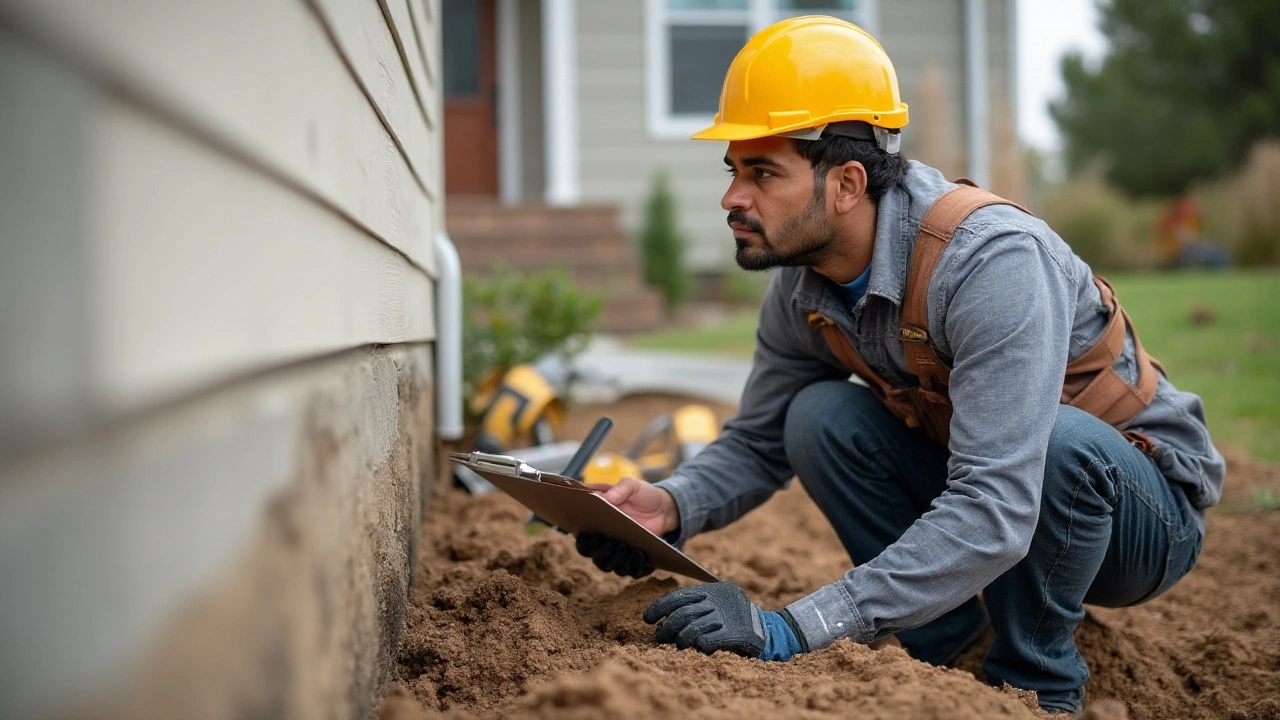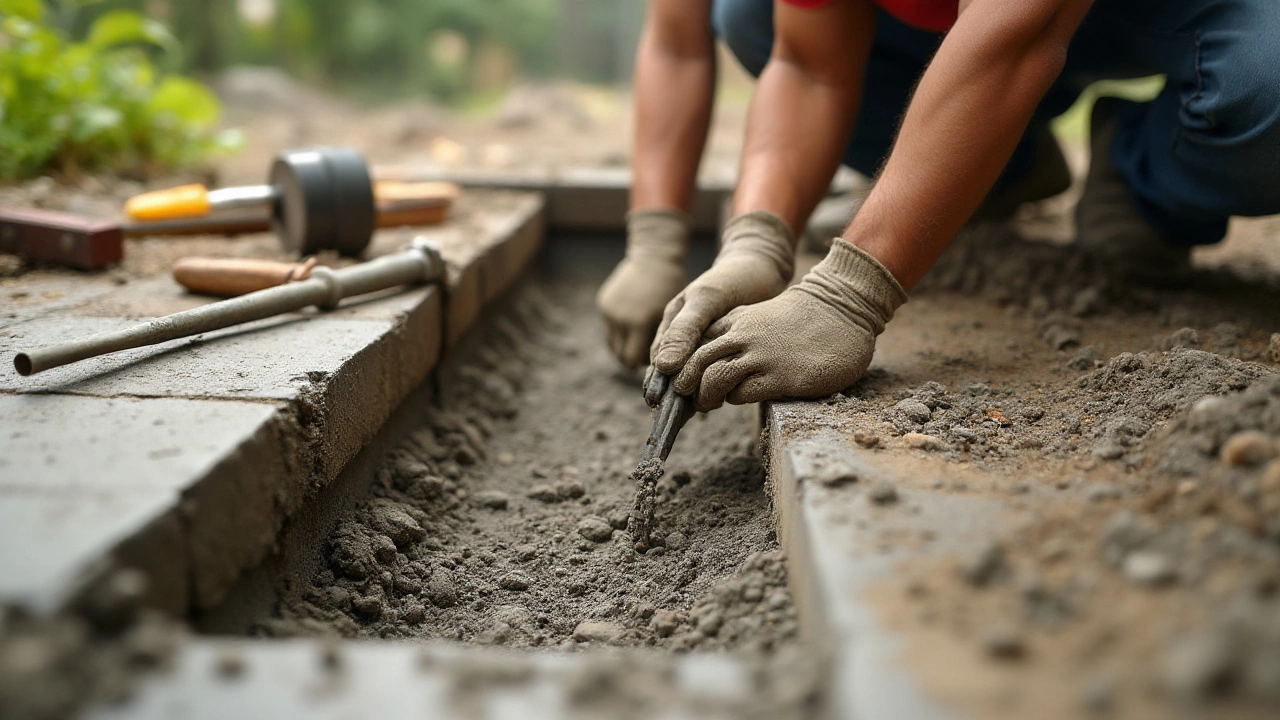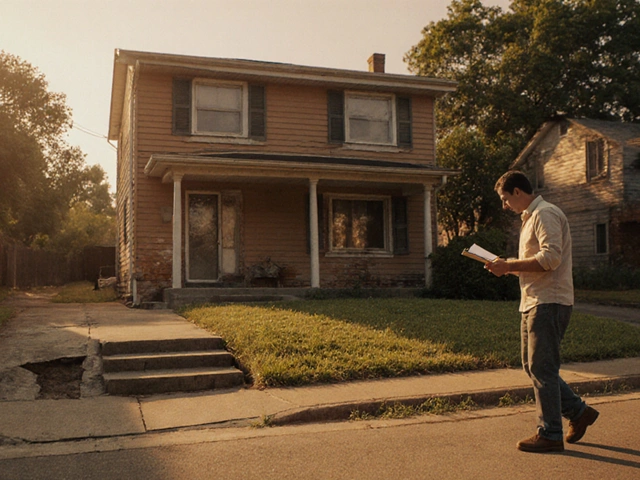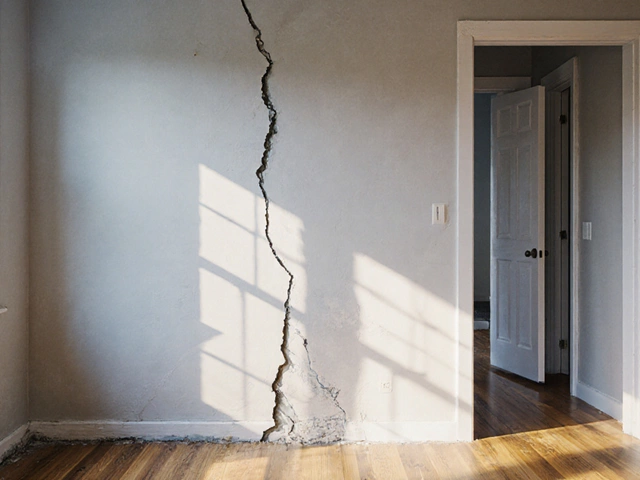Your home stands on its foundation, sturdy as a rock. But what happens when that rock starts to sink? It's a homeowner's nightmare, yet an issue that’s more common than you might think. A sinking foundation doesn't just spell trouble for your home's structure—it could also decrease your property’s value if left unaddressed.
Discovering the issue early can save significant time and money. It's essential to recognize signs like unexpected cracks or a noticeable slant in floors and walls. Such problems, if spotted early, are easier to manage than when ignored. There are several effective methods for repairing a foundation, from underpinning to slabjacking, each suitable for different situations and types of damage.
This article delves into the causes behind sinking foundations, offers insights into various repair techniques, and underscores the importance of professional intervention. Remember, maintaining your foundation's integrity is key to safeguarding your home’s future.
- Identifying Signs of a Sinking Foundation
- Common Causes of Foundation Problems
- Methods for Repairing a Sinking Foundation
- Benefits of Professional Help
Identifying Signs of a Sinking Foundation
When it comes to maintaining the structural stability of your home, recognizing the signs of a sinking foundation early can make all the difference. One of the most telling indicators is cracks in the walls. These can start as small hairline fractures but may expand over time, creating unsightly gaps that need more than just a cosmetic fix. Often, these cracks appear above doorways and windows or run through bricks and blocks, suggesting that the house is settling unevenly.
Another common sign is misaligned doors and windows. If your doors begin to stick or jam, or windows struggle to open smoothly, this could indicate your foundation is uneven. This situation arises when the frames warp due to the shifting beneath them, a clear red flag warning you of a sinking foundation issue. Sometimes, you might even notice gaps in window and door frames, which can let in drafts and drive up heating and cooling bills.
Additionally, sloping or uneven floors can be a major indicator that your home is experiencing foundation problems. A ball placed on the floor rolling in a specific direction could be humorous at first, but it's a sign of underlying trouble. This unevenness can ultimately lead to separation between walls and floors or ceilings, another symptom of a settling foundation.
In some cases, the most noticeable symptoms are outside your home. Look for cracks in the concrete around your house, like driveways or paths. These can indicate shifting soil or water issues, leading causes of foundation movement. If you have a basement, be mindful of any moisture seeping through cracks or pooling on the floor, as this could result from foundation settling issues.
Surprising Signs and Expert Insights
The subtlety of some signs can often lead homeowners to overlook them until they evolve into something more severe. Uneven cabinets and counters, gaps in caulking, and stretching wallpaper can provide clues that your foundation isn't quite right. Foundation repair specialists often point out that trees growing too close to the house can exert pressure on the foundation, creating additional stress over time.
"Families should never underestimate the importance of early detection when it comes to foundation issues. Acting fast can save not just money, but the comfort and safety of your home," says Robert Trice, a structural engineer with over twenty years of experience in foundation restoration.
By staying vigilant and conducting regular inspections, especially after significant weather events like heavy rain or earthquakes, homeowners can catch these signs early. You could compile a checklist of spots to inspect periodically, both inside and out. Recognizing and addressing these issues quickly is essential to ensuring your home's long-term health and the comfort of everyone living there.

Common Causes of Foundation Problems
Foundation repair often begins with understanding what led to the problems in the first place. Several factors can contribute to the unsettling reality of a sinking foundation. Among the primary culprits is soil erosion. Over time, water from heavy rains or poor drainage can wash away the soil that supports your home, leading to instability and eventual sinking. The type of soil your house is built on plays a crucial role as well—clay soils, for instance, expand when wet and contract when dry, creating a never-ending cycle that can put stress on the foundation.
Then, there are the issues of tree roots. While trees are excellent for the environment and provide much-needed shade during hot summers, their roots can extend much farther than one might expect and disrupt the foundation. They may grow beneath the concrete, pushing and cracking it as they expand. This slow but persistent growth can lead to significant damage if not managed. Here comes an often overlooked factor: poor construction practices. If your home’s foundation was not laid properly or the builders used subpar materials, these initial mistakes can magnify into severe problems over the years.
Extreme weather conditions also have their say in this story. From relentless sun exposure causing soil shrinkage to heavy ice and snow creating pressure on the foundation, nature plays a significant role. An interesting perspective comes from the words of David W. Moody, a renowned structural engineer:
“The key to a strong home lies not only in its design but in how well we've accounted for the quirks of Mother Nature.”Lastly, plumbing leaks cannot be ignored either. A slow, undetected leak under the home can create soggy soil, reducing its ability to support the weight above it. Imagine trying to balance on a sponge—over time, it just doesn't hold up. Understanding these causes is the first step in addressing any existing issues and preventing future ones, but it's always wise to call on a professional to provide thorough assessments and solutions.
| Cause | Description | Impact |
|---|---|---|
| Soil Erosion | Water washes away supporting soil | Instability, sinking |
| Tree Roots | Roots disrupt foundation | Cracking, pressure |
| Poor Construction | Subpar materials or workmanship | Weak foundation structure |

Methods for Repairing a Sinking Foundation
Addressing the issue of a sinking foundation is a crucial step in maintaining the structural integrity of your home. A variety of methods exist, each with its own advantages and ideal situations for use. The choice of approach usually depends on the specific cause of the sinking, the type of foundation, and sometimes even the weather conditions that are prevalent in the area. Understanding these techniques not only empowers homeowners but also helps in making informed decisions when seeking professional help. Let's dive into some of the most common methods used in foundation repair today.
One of the most widely used methods is underpinning. This technique involves extending the foundation in depth or breadth so that it rests on more supportive soil, providing stability to the structure above. There are several types of underpinning, with pier underpinning being particularly popular. This involves driving steel piers into the ground until they reach bedrock or stable soil layers. Once this is achieved, the weight of the home is then carefully transferred onto these piers, effectively arresting any further movement.
According to the International Association of Certified Home Inspectors, "Underpinning is not only about stabilization. In many cases, it restores the weight-bearing capacity to its original condition." This is a testament to its reliability and effectiveness in dealing with foundation repair.Another method is the use of slurry or grout mixtures in a process commonly referred to as slabjacking or mudjacking. This involves injecting a cement-like mixture underneath the sunken sections of concrete foundations or slabs. As the mixture fills the voids and hardens, it lifts the settled areas back to their original position, offering a quick and cost-effective solution in many situations. It is important to note that slabjacking is more frequently chosen for minor corrections rather than addressing deeper foundational issues.
Helical Piers and Polyurethane Foam
For more specialized interventions, helical piers are a standout method. This technique involves driving screw-like steel piers into the ground using hydraulic machinery. They are then rotated into stable soil until a specified depth is reached. As these piers don’t require the heavy equipment that some methods do, they are often preferred for limited access areas or when work must be done near gardens or landscaping. On the other hand, the use of polyurethane foam for raising concrete has grown in popularity. This lightweight and hydrophobic material can be injected much like concrete in slabjacking but expands upon contact, filling voids more effectively and reducing the amount of structural stress exerted on the foundation walls.Choosing the right method is crucial, and often, the best course of action is a combination of these techniques. The key is to thoroughly assess the foundation problem with the help of a professional structural engineer. Regular inspection and maintenance are also pivotal in preventing future issues. As buildings settle naturally over time, early detection and early repair can save homeowners considerable expense and headaches down the line. With the proper solution, restoring structural stability and peace of mind can be achieved swiftly and efficiently.

Benefits of Professional Help
Engaging professionals to handle foundation repair goes beyond mere convenience—it's often a necessity for ensuring safety and long-term stability. When a foundation begins to sag, the complexities of the situation demand expertise that only well-trained professionals can offer. They possess not only the experience but also the specialized equipment required to assess and rectify the problem. Understanding the underlying causes and identifying the most suitable remediation methods requires a keen eye for detail and an in-depth knowledge of construction principles.
A professional assessment can uncover issues that an untrained eye might miss, providing a comprehensive view of the damage and potential hazards. By employing advanced techniques like hydraulic jacking or steel pier reinforcement, experts can help restore a sinking foundation accurately. These methods often require specialized tools that professionals typically have on hand. Moreover, professionals can implement personalized solutions that take into account factors like soil type, climate, and the specific design of your home, ensuring effective and lasting results.
Enlisting professional help can also provide peace of mind, knowing that your home's structural stability is being handled by seasoned hands. Many homeowners find themselves overwhelmed trying to address foundation problems alone, often leading to ineffective quick fixes or even worsening the situation. Hiring experienced contractors can prevent these pitfalls, as their proficiency allows them to tackle challenging repairs methodically, applying their knowledge to foresee and avoid complications before they arise. As renowned engineer Henry Petroski once said,
"Successful engineering is all about understanding how things break or fail."This insight resonates in the realm of foundation repairs, as it's about understanding the root causes of structural problems and applying technical proficiency to fix them effectively.
Cost considerations are often a concern, but what many homeowners might not realize is the potential savings a professional service can offer in the long run. By addressing the problem correctly the first time, you eliminate the need for repetitive, temporary repairs which could accumulate to a higher cost. Since professionals also handle the legal aspects, such as obtaining necessary permits and adhering to local construction regulations, it prevents costly legal troubles down the line. An investment in professional help today can secure your home’s future, adding value and ensuring safety for your loved ones.
Finally, the benefits of professional help include warranties and guarantees that most reputable companies offer. This provides homeowners with reassurance and protection against future issues. After the repairs are completed, having a warranty means that any subsequent problems related to the work done will be addressed without additional cost, offering a layer of security and financial safety net. These warranties often cover both materials and workmanship, further ensuring that you are protecting your investment in more ways than one.



Write a comment